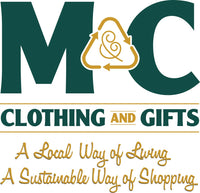Consignment, Thrifting, Resale and Secondhand Shopping
Breaking it all down…
So often, people ask me “What is the difference between Consignment and Thrifting.” So, it got me thinking. We do not talk about it often because we live and breathe consignment as that is our business, but I thought it would be a great idea to break it down for ya’ll as it can be confusing. Here is an easy-to-understand breakdown of the differences between Consignment, Thrifting, Resale, and Secondhand Shopping as well as the benefits to them:
Thrifting, consignment, resale, and secondhand shopping are all ways to acquire used or pre-owned items, but they operate with some distinctions. Here is a breakdown of each, along with their benefits:
- Consignment:
- Definition: Consignment shops accept items from individuals who want to sell them. The shop then sells the items on behalf of the owner and takes a percentage of the sale.
- Benefits:
- Earn Money: Consignors can earn money by selling their gently used items.
- Quality Control: Consignment shops often have stricter quality standards, ensuring that items are in good condition.
- Variety: Consignment shops offer a curated selection of items, often including higher-end or designer pieces.
- Thrifting:
- Definition: Thrifting involves shopping for secondhand items, typically at thrift stores, charity shops, garage sales, or flea markets. Individuals or organizations often donate these items.
- Benefits:
- Affordability: Thrifted items are usually more budget-friendly than buying new.
- Unique Finds: Thrifting can lead to discovering unique and vintage items that may not be available in mainstream retail stores.
- Sustainability: Thrifting promotes sustainability by extending the lifespan of products and reducing overall waste.
- Resale:
- Definition: Resale refers to the buying and selling of used items, and it can include various channels such as online platforms, brick-and-mortar stores, and specialized resale shops.
- Benefits:
- Earning and Saving: Like consignment, individuals can sell their items for extra cash, and buyers can find items at a lower cost compared to buying new.
- Convenience: Resale platforms and stores offer a convenient way to buy and sell items, often with a broader range of categories and products.
- Secondhand Shopping:
- Definition: Secondhand shopping is a broad term that encompasses all methods of purchasing items that have been previously owned or used, including thrifting, consignment, and resale.
- Benefits:
- Cost-Effective: Secondhand shopping, in general, is often more affordable than buying new items.
- Environmental Impact: Buying secondhand contributes to sustainable living by reducing the demand for new production and minimizing waste.
- Variety: Secondhand shopping offers a diverse range of items, from clothing to furniture, and provides an opportunity for unique finds.
Key Common Benefits to Consignment, Thrifting, Resale, and Secondhand Shopping:
- Environmental Impact: All these options contribute to sustainable living by reducing the demand for new production and minimizing waste.
- Budget-Friendly: Secondhand shopping is often more economical than purchasing new items.
- Treasure Hunting: Finding unique and one-of-a-kind items can be an exciting aspect of these shopping methods.
- Sustainability: All these methods contribute to reducing environmental impact by promoting the reuse of items.
- Unique Finds: Secondhand, thrift, and resale shopping often offer unique and vintage items that may not be readily available in traditional retail stores.
- Cost Savings: One of the primary benefits is the potential to save money compared to buying new items.
Choosing between consignment, thrifting, resale, or secondhand shopping depends on individual preferences, the specific items sought, and the desired shopping experience. Each method has its advantages, making them popular choices for those seeking affordability, sustainability, and unique finds.
I hope you enjoyed the breakdown.
Happy Shopping - Irene

